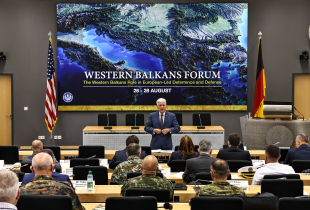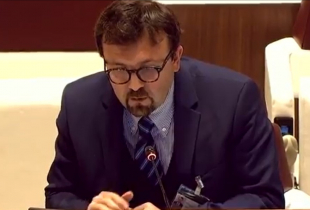
Obama and the “New Europe”
Introduction
Where not simply eclipsed by the global financial crisis, turmoil in the Greater Middle East, and the “pivot” toward Asia, the Obama administration’s relations with Central Europe1 have struggled to escape from the narrative of neglect (bordering on betrayal) that congealed during its first year in office. Though the tone of interaction is likely to remain less exuberant than in the recent past, both sides’ evolving interests in Europe and beyond still stand to gain from mutual support. Balanced analysis and realistic assessments will be needed to achieve this.
Since late 2009, the Obama administration has made a concerted effort to reassure the region of American commitment and advance cooperation across a range of substantive issues. Yet occasional new missteps and mixed reception in the region have left some lingering doubts. More significantly, a mix of unfinished business and emerging challenges will require either a second-term Obama or successor Romney presidency to actively build on recent progress rather than revert to complacency. Despite transformed security agendas, history and geography leave a distinctive role for Central Europe in U.S. foreign policy.
From Romance to Reassurance
In the words of Slovak analyst Tomas Valasek, America’s “special relationship” with Central Europe after the Cold War rivaled traditional ties to Great Britain.2 The region’s combination of dramatic history, democratic witness, and committed Atlanticism captivated key American leaders from both political parties. For many of their counterparts in Central Europe, uni-polar America offered the best-ever guarantee of their historically vulnerable freedom. Signature policy outcomes included NATO enlargement, intervention in the former Yugoslavia, and close cooperation in the Global War on Terror.
In reality, the mutual romance underlying this simplified description had waned by the end of the second Bush presidency.3 Americans grew more conscious of the region’s practical limitations. Iraq eroded Central Europeans’ confidence in U.S. competence and disappointed their expectations of reconstruction contracts. The U.S. visa waiver program long excluded all of the region but Slovenia and added only the Czech Republic, Hungary, Slovakia, and the three Baltic states in late 2008. Meanwhile, Europe as a whole lost ground within American foreign policy, and Central Europe grew more economically and socially integrated into the European Union.
Against that background, the 2008 U.S. election failed to generate the same “Obamamania” in Central Europe that was evident further west on the continent. Besides perfunctory support for NATO enlargement and Kosovo’s independence in spring 2008 and co- signature of a 2007 Senate resolution critical of “FYROM” (Macedonia) in its disputes with Greece, President Obama’s personal history with the region was slight. In contrast, his Republican opponent Senator John McCain’s declaration after the August 2008 Russian-Georgian conflict that “we are all Georgians” resonated with those Central Europeans most wary of Russia’s further intentions. Unease built further after President Obama took office. Some regional officials lamented the slow pace of ambassadorial appointments to their countries, extending a year or more in several cases. Others perceived a dearth of regional specialists among senior administration appointees.
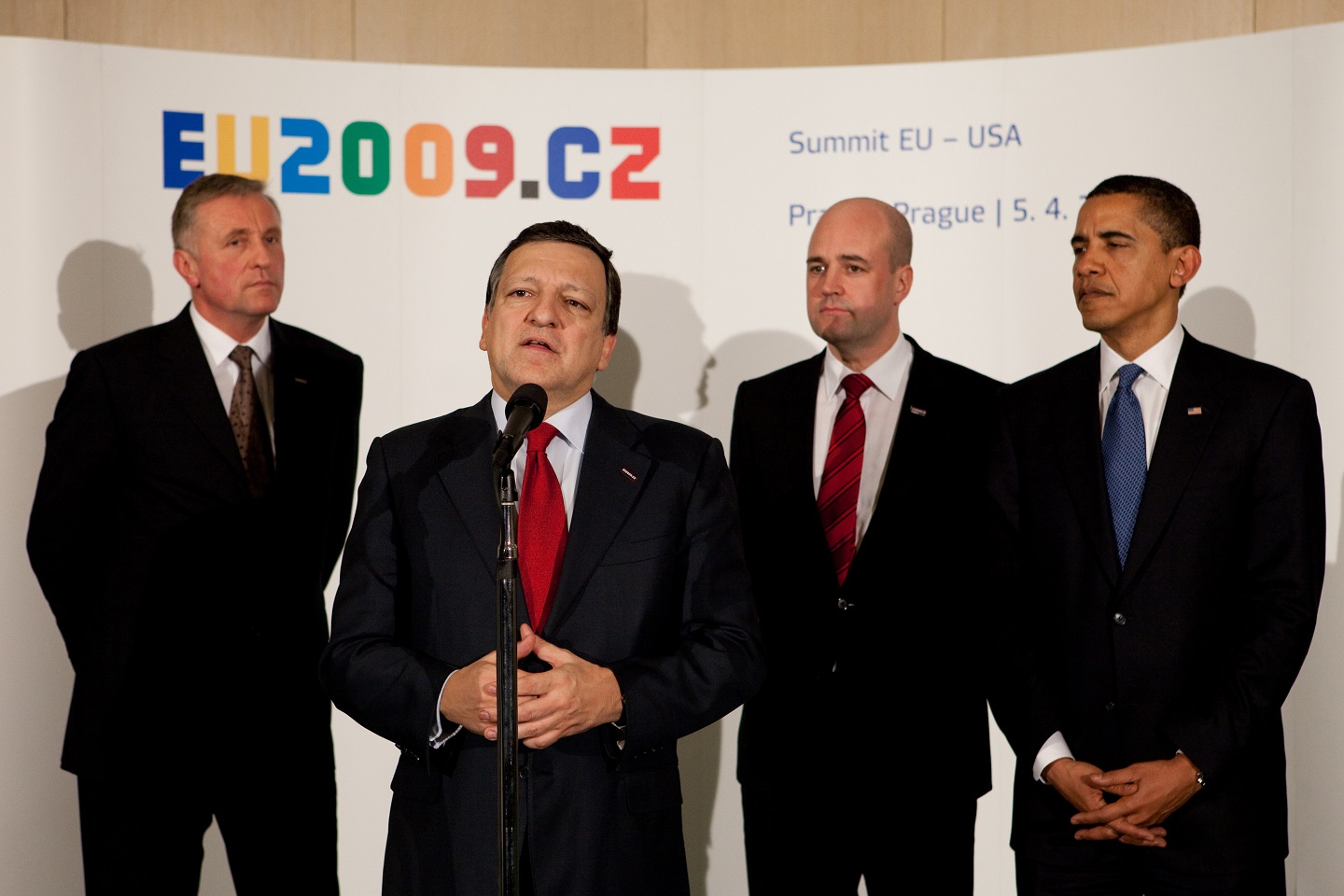
President Obama’s travel reinforced the sense that Central Europe had slipped to an “assistant secretary of state problem.”4 As during Obama’s campaign the previous summer, his first official trip to Europe for G-20 and NATO summits in April 2009 originally included only Britain, France, and Germany. He belatedly added a stop in Prague, but his nuclear disarmament speech there lacked the regional specificity (“no more Munichs, no more Yaltas”) of President George W. Bush’s counterpart address in Warsaw in June 2001. Likewise, President Obama’s decision to decline a state dinner in favor of a private meal with his wife Michelle contrasted with the personal warmth of Bill Clinton’s 1994 local jazz club visit with then-Czech President Vaclav Havel.
That summer, President Obama returned to France in June for the 65th anniversary of the World War II D-Day landing and traveled to Moscow in July to meet with Russian President Dmitry Medvedev and Prime Minister Vladimir Putin. Building on Vice President Joe Biden’s call for a “reset” of soured U.S.-Russian relations at February’s Munich Security Conference, the latter trip produced a framework for a successor to the START arms control treaty and an agreement for non-lethal supplies for NATO forces in Afghanistan to cross Russian territory. President Obama’s mostly mild, indirect statements regarding Russia’s politics and relations with neighbors reminded critics of Secretary of State Hillary Clinton’s February comment that human rights “can’t interfere” with cooperation with nondemocratic powers.5
This apparent policy trend triggered an open letter two weeks later from 22 prominent former officials from nine Central European states, including Havel and former Polish President Lech Walesa. Conceding that “Central and Eastern European countries are no longer at the heart of American foreign policy,” the letter recalled the region’s history of having “suffered when the United States” failed to stand up “for its liberal democratic values.” Linking past experience to the present, the letter described renewed “nervousness in our capitals [that] too narrow an understanding of Western interests” might lead to misplaced “concessions” to a “revisionist” Russia intent on “de facto neutralization of the region.”6
President Obama’s mid-September cancellation of the Bush administration’s plan for European-based missile defense seemed to validate these fears. Lack of consultation with the hosting Czech and Polish governments left those countries’ Prime Ministers to be awakened to receive the information hours before the public announcement. Its timing on the 70th anniversary of the Soviet invasion of eastern Poland in World War II further amplified negative reactions. Polish President Lech Kachynski had previously said that change would represent an “unfriendly gesture,” and recently replaced Czech Prime Minister Mirek Topolanek called it “not good news…for Czech freedom and independence.”
This episode marked both the low point in relations and the start of concerted efforts by the administration to balance its reset with Russia with “reassurance” for Central Europe. This policy kicked off with quickly scheduled visits by Vice President Joe Biden to Warsaw, Prague, and Bucharest in October, during which Biden delivered the Kennedyesque message that relations were no longer about what the United States “can do for Central Europe” but rather what the U.S. can do together with Central Europe in the world.7 President Obama himself missed commemorations of the twentieth anniversary of the fall of the Berlin Wall in the following month due to a trip to Asia. However, he held consultative summits with the presidents or prime ministers of eleven countries in the region back in Prague in April 2010 (prior to signing the New START treaty with President Medvedev) and again with eighteen regional counterparts in Warsaw at the end of May 2011 to counter prior impressions of disinterest.8
Meanwhile, substantive steps paralleled the high-profile diplomacy. The administration took the lead in initiating long-deferred NATO contingency planning for the defense of new allies (code-named “Eagle Guardian”) and organizing an associated series of multinational military exercises in and around the Baltic states. It upheld the centrality of collective defense within the Alliance’s updated Strategic Concept of November 2010, backed by maintenance of European-based tactical nuclear weapons and, initially, one of two U.S. combat brigades previously slated for stateside return. It also followed up on Bush administration defense arrangements in opening a twelve-nation C-17 air transport consortium at Papa, Hungary in spring 2009, adding an annual multi-month Black Sea Rotational Force of U.S. Marine reservists to the Joint Task Force-East arrangement with Romania and Bulgaria from 2010, and deploying the first rotational Patriot air-defense training battery (with 100 U.S. troops) in Modrag, Poland in May 2010.9 Obama’s visit to Warsaw the following year sealed another agreement for regular rotations of American F-16 fighter jets and C-130 transport planes to that country from 2013. Discussions are also underway to establish a NATO helicopter training center in the Czech Republic. Varied progress on other issues accompanied these steps. In even the most positive cases, though, renewed challenges loom in the near- to medium-term.
Missile Defense
Ballistic missile defense has been the most highly charged issue in U.S. relations with Central Europe. It both led Bush administration priorities and topped Russian foci for complaint. After years of talks and study, in summer 2008 Secretary of State Condoleezza Rice signed agreements with her Czech and Polish counterparts to station an advanced X-band radar southwest of Prague at Brdy and ten long-range missile interceptors at Redzikowo air base near the Baltic coast by 2013.
Despite much of the initial media reaction, the Obama administration’s shift away from this plan is hard to characterize as a sell-out. To begin with, the Bush-era agreements had not yet been ratified by either the Czech or Polish parliaments and appeared unlikely to be ratified in the case of the former. Roughly two-thirds of the Czech public opposed accepting the radar. Prime Minister Donald Tusk’s government in Poland had negotiated hard on the terms for accepting the interceptors and formally agreed to do so only in the wake of the Russia-Georgia conflict. Other NATO members such as Romania and Bulgaria had also complained that the planned system would not cover their territory.
Moreover, rather than simply terminate that system, the Obama team replaced it with a more extensive alternative. Its “phased, adaptive approach” started with deployment of ship- based Aegis systems in the eastern Mediterranean in 2011 to defend against short and medium- range missiles. Progressively more capable land-based interceptors are to be added in the 2015, 2018, and 2020 time-frames, extending defense against intermediate and ultimately long-range intercontinental weapons. In terms of claimed advantages, this system begins with more mature technology and better matches the nature of Middle East-based threats. Diplomatically, it was more popular within NATO and initially less objectionable to Russia.
Since the plan’s announcement, the administration and its partners have taken several steps to put it into practice. The Aegis ship U.S.S. Monterrey deployed as the system’s first element in April 2011. In June, the Czech government ended talks on hosting an early-warning monitoring center (an unneeded “consolation prize” according to Minister of Defense Alexander Vondra) but indicated its openness to other forms of participation. In a rapid succession of developments in September, Turkey announced it would host an X-band forward radar in its eastern Malatya province as early as the end of the year, Poland’s July 2010 amended agreement to host 24 interceptors at Redzikowo from 2018 entered into effect, and Romania signed a similar agreement to host the same number of earlier model interceptors at its Deveselu air base from 2015; roughly 150 American personnel will be stationed at each of the latter two facilities. In October, Spain accepted the U.S. offer to deploy additional Aegis-equipped ships to the Rota naval station. The following May NATO declared interim capability for the system at its summit in President Obama’s adopted hometown Chicago.
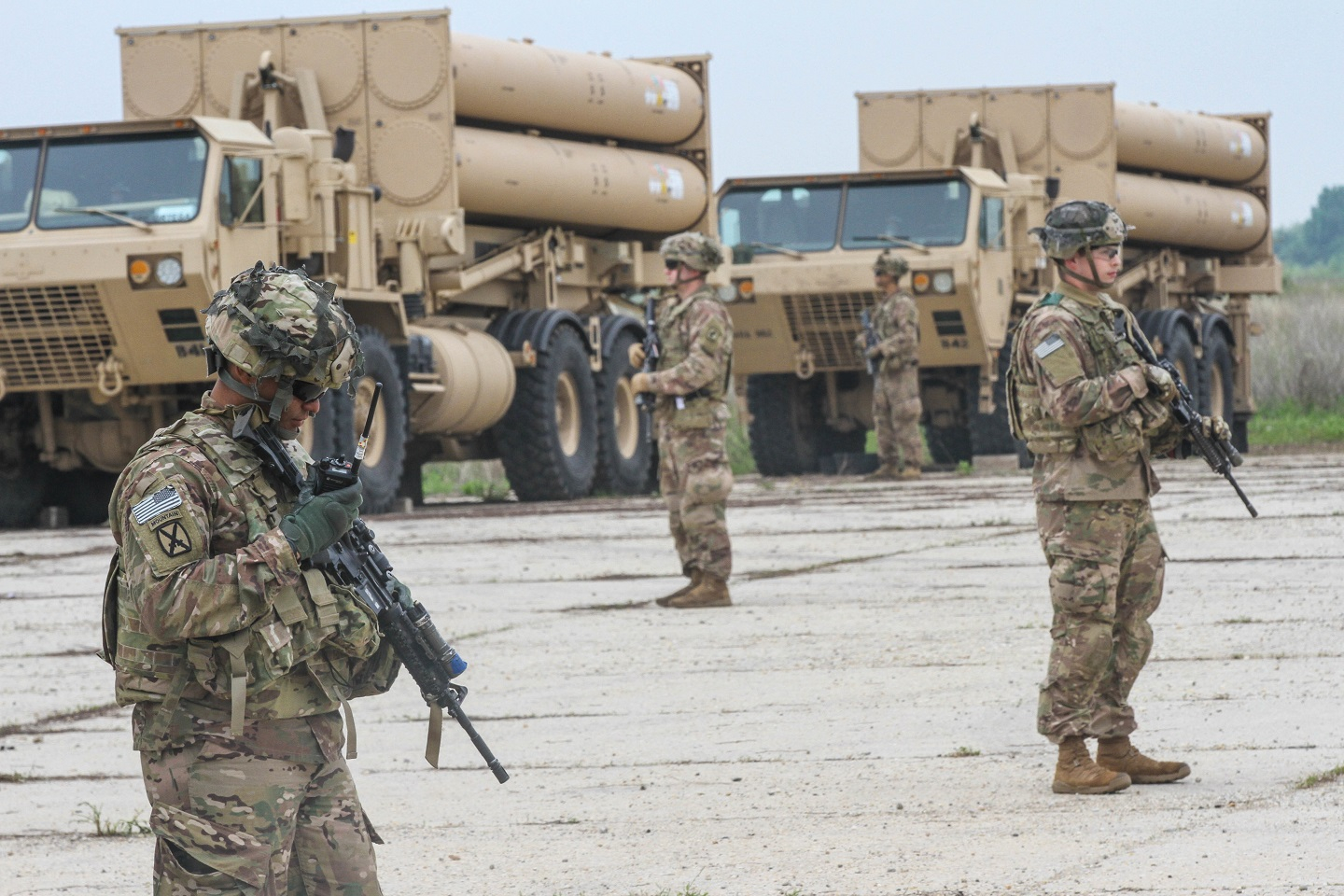
Missile defense has thus become an unexpected cornerstone of the administration’s engagement with Central Europe, but several challenges still require deft management over the next several years. Russia’s criticism has intensified since the new system’s initial announcement, leading to threats to withdraw from New START if its terms for participation are not met. On the technical level, the planned upgrades for interceptors in the latter phases will need to be achieved within a tightening budget environment. Funding levels could also be affected if the potential nuclear threat from Iran were transformed by Israeli airstrikes, new Stuxnet-type setbacks, or internal regime change. The key for U.S. policy will be maintaining ability to take advantage of the system’s intended flexibility without again effecting sudden unilateral change.
Military Missions
Since the mid-1990s, Central European states have made often modest but disproportionately sizeable commitments to NATO and U.S.-led military operations in the Balkans, Afghanistan, and Iraq. These deployments have provided opportunities to demonstrate their value as new or aspiring allies and allow their militaries to gain operational experience, training, and modernization support.
Of active operations, NATO’s International Security Assistance Force (ISAF) mission in Afghanistan has been the Obama administration’s clear priority. Testing the President’s campaign pledge to “strengthen alliances by asking allies to do more,” the administration pressed hard for increased contributions from other NATO members to accompany its own decisions about major force increases in March and November 2009.
Since that time, Central Europeans have collectively provided an additional 3,000 troops to ISAF, bringing their total to roughly 8,000.10 Poland and Romania account for half that number and together with several other countries from the region have deployed elite special forces to the southern and eastern portions of Afghanistan where fighting has been most intense.The Czech Republic, Hungary, and Lithuania lead provincial reconstruction teams. Bosnia- Herzegovina, which itself still hosts international peacekeepers, has sent several dozen camp guards.
In contrast, Central Europe was largely absent from NATO’s Operation Unified Protector in Libya during 2011. In April, Polish Prime Minister Tusk criticized the “hypocrisy” of the push for intervention by France and Great Britain, aligning with the skeptical position of Germany. Bulgaria and Romania each contributed a frigate for naval embargo enforcement, for one and three months, respectively. Albania offered use of its seaports. However, despite a renewed appeal by U.S. Secretary of Defense Robert Gates in June, Poland declined to commit any of its F-16 fighter jets to the operation. The Czech Republic and Hungary also withheld their Gripens.11
Both experiences raise questions for the future. One will be Central Europeans’ role in Afghanistan beyond the envisioned 2014 transfer of responsibility for security to Afghan government forces. The United States and other allies have already begun troop reductions, but international presence for support and training will be needed for several years to come. Another is whether and how Central Europeans might contribute to additional missions if, as President Obama and other officials have suggested, Libya represents a model for future operations. Central Europeans’ slight participation in that case reflected not only their commitments in Afghanistan but also most countries’ lack of technical capability or training for higher spectrum tasks.
Budget cuts will make addressing these issues even more difficult. With very few exceptions, regional defense budgets have declined sharply over the past two years. Lithuania already spends less than one percent of GDP on defense, while others such as Hungary, Latvia, and Slovakia are close to that level.
The task for U.S. policy will be to assist Central Europe’s readiness for appropriate missions within this environment. That will have to begin with carefully calibrated strategy for Afghanistan up to and beyond 2014. In addition to appealing to countries to at least stabilize defense budgets, encouragement can be given for “smart defense” efforts that involve regional pooling of resources. Finally, additional emphasis can be placed on low cost forms of defense cooperation such as liaison officers and educational exchanges that build mutual familiarity, personal connections, and participant capacity to lead similar efforts at home or with third countries.
NATO Enlargement
NATO enlargement represents one of the most tangible achievements of the United States in Central Europe. The addition of a dozen states from the region since the late 1990s nearly doubled alliance membership and paved the way for parallel growth by the European Union. The two newest allies, Albania and Croatia, completed their accession shortly after President Obama took office. Since then, the administration has reiterated NATO’s open door policy but has not actively pushed new enlargement. Instead, it has kept focused on preliminary preparation and capacity-building while encouraging more active EU outreach toward the potential candidate zones of Eastern and Southeast Europe.
Ukraine and Georgia presented the most sensitive early cases. President Bush had pushed hard for their advancement to Membership Action Plan (MAP) status at NATO’s 2008 Bucharest summit, eventually settling for a compromise statement that both “will become members of NATO.” After President Viktor Yanukovych’s election in February 2010, Ukraine’s government took that country’s NATO bid off the table. Georgia remains highly interested, and NATO leaders reaffirmed the Bucharest commitment at their 2010 Lisbon summit. However, President Mikhail Saakashvili’s perceived recklessness prior to the August 2008 conflict with Russia, the acuteness of continuing problems with that country, and internal political clashes have further eroded support within NATO for any near-term accession.
In the meantime, the Obama administration has pursued defense reform projects with each country through their special bilateral commissions and MAP-like Annual National Programs with NATO and designated Strategic Partnerships with the United States. Georgian authorities have sought more robust training and equipment sales for territorial defense, but the Obama administration has prioritized preparation for ISAF deployments. Saakashvili’s reception in the Oval Office in January 2012 managed – at least temporarily – to paper over these differences.12
A similar pattern holds with the comparatively less problematic Western Balkans. The administration supported extending MAP status to Montenegro in December 2009 and conditionally to Bosnia-Herzegovina (pending resolution of defense property issues) in April 2010. Top officials, in particular Vice-President Biden and Secretary of State Hillary Clinton, encouraged reform and reconciliation during visits to Bosnia-Herzegovina (still under formal international supervision), Serbia (officially neutral), and Kosovo (unrecognized by four NATO allies) in May 2009 and October 2010, respectively. Except for the brief and unsuccessful Butmir Process in Bosnia-Herzegovina in fall 2009, the administration has held back from big-push diplomacy and resisted appointment of a regional special envoy to break the various political and diplomatic deadlocks that are blocking progress toward NATO as well as the EU. This also applies to Macedonia, which was pre-approved to join NATO in 2008 pending resolution of its name dispute with Greece.
This go-slow approach accepts that remaining potential candidates are on the whole less clearly interested, prepared, and/or supported for membership than their predecessors.13 From this standpoint, high-profile initiatives to accelerate accession (especially of former Soviet republics) would gratuitously strain relations with Russia as well as more cautious European allies such as France and Germany.
That reading has plausibly fit circumstances over the past three years, but demand for a more decisive advance is building. Prior rounds of enlargement required active American leadership to secure alliance consensus. Some aspirants had hoped for breakthroughs at NATO’s May 2012 summit in Chicago, but Secretary Clinton’s comment there that it “should be the last summit that is not an enlargement summit” added to expectations for the next presidential term. On the positive side, the reform and capacity-building track may have had time to bear fruit, leaving one or more candidates ready for accession. On the negative side, even with its somewhat tarnished appeal, demonstrable “Euro-Atlantic perspective” could become more urgently needed to head off deterioration of lingering regional conflicts. Along with all the other usual reasons, both counts are likely to apply first to the Balkans.
Democracy Support
Partly overlapping with enlargement, support for Central European activism has become part of the Obama administration’s heightened attention to democratization since 2009. This applies especially to the Visegrád Four states (Poland, Czech Republic, Slovakia, and Hungary), who have made that an explicit foreign policy priority. Such countries’ own recent experience and lack of great power baggage lend them special credibility in this area.
Central European NGOs as well as governments have been engaged in a range of related efforts. Both have focused primarily on non-NATO/EU near neighbors to their east and south, but they sometimes also become involved with countries farther afield. For instance, Serbia’s Center for Applied Non-Violent Action and Strategies (CANVAS) has shared lessons of the 1990s resistance to Milosevic with activists from Egypt to Burma.14 Accordingly, U.S. assistance has included financial or organizational support for regional conferences and workshops with participants from new and non-democracies.
The Obama administration has also backed regional initiatives within broader multilateral frameworks. An early example was the Czech-Polish-Swedish Eastern Partnership of the European Union with six post-Soviet neighbors, which held its inaugural summit in Prague in May 2009. Another was Poland’s effort to revitalize the Community of Democracies at its tenth anniversary ministerial in Krakow in July 2010.15 Assistance to political transitions in the Middle East and North Africa after the Arab Spring was a particular focus of Obama’s summit with regional leaders in Warsaw in May 2011, and Poland identified Tunisia along with Moldova as a priority country for its EU Presidency the second half of that year. President Obama also discussed establishment of a Democracy Center in Prague as part of the new Open Government Partnership Initiative with visiting Czech Prime Minister Petr Necas that October.
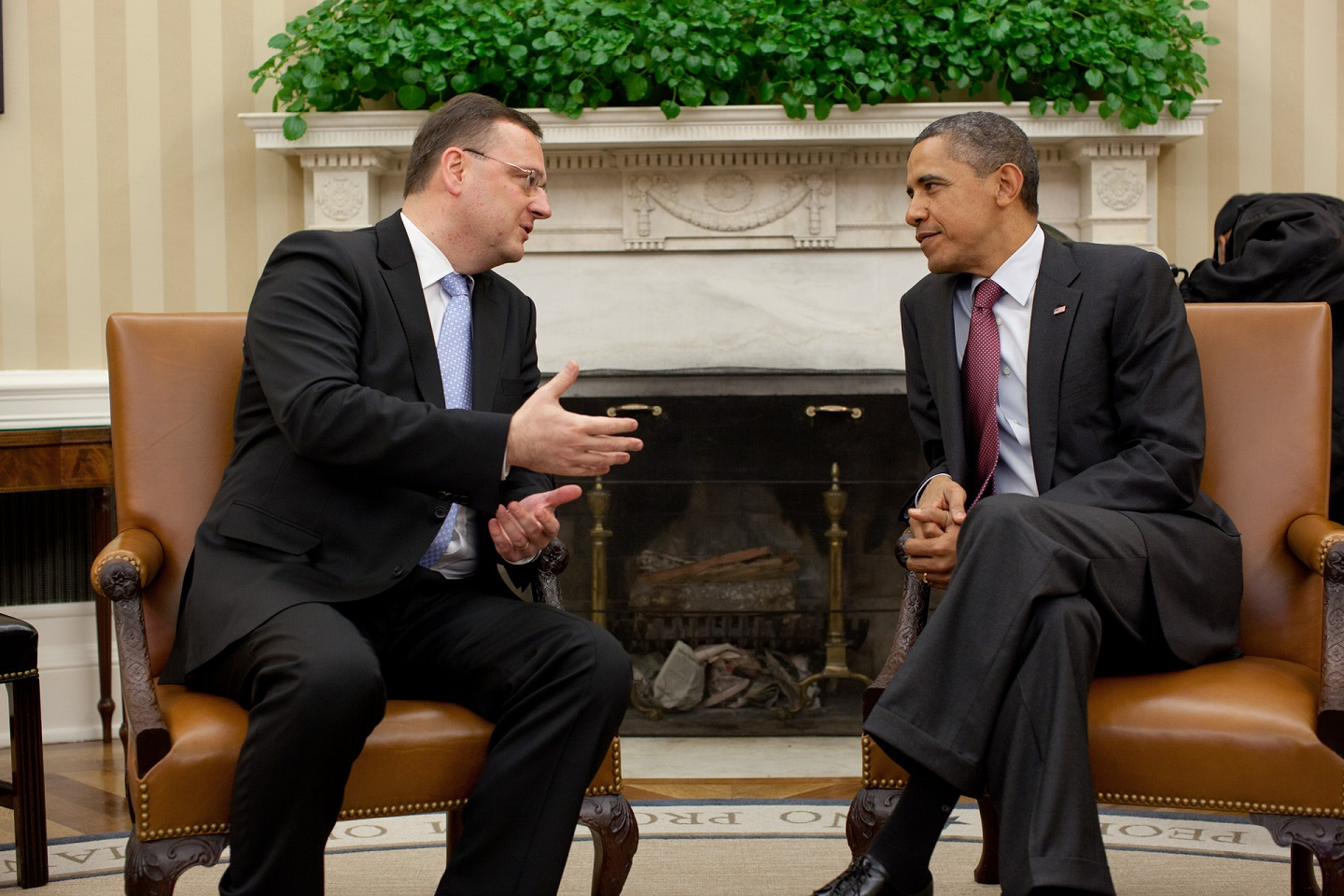
Despite this momentum, two common concerns with democracy promotion cast shadows on these efforts. The first is effectiveness.16 Belarus and Ukraine have been two of the biggest targets of regional programs. However, post-election violence by the regime of President Alexander Lukashenko in December 2010 in the former and the criminal conviction of former Prime Minister Yulia Tymoshenko in October 2011 in the latter exemplify political regression rather than improvement. The second is internal defects among would-be promoters. Warnings of democratic “backsliding” by new NATO and EU entrants have sounded for at least half a decade.17
During President Obama’s time in office, Albania, Hungary, and Romania have received the greatest scrutiny. In Albania, the administration counseled compromise and electoral reform after opposition allegations of fraud in the July 2009 elections triggered a prolonged parliamentary boycott. When related demonstrations led to four deaths in January 2011, U.S. officials both condemned protestors’ confrontational tactics and pointedly supported investigations into the security forces’ use of firearms that the government attacked as political motivated. In Hungary, critics charge that media legislation and a new constitution introduced in early 2011 entrench the governing party’s hold on power. Secretary of State Clinton consequently “talked openly about preserving democratic institutions” with Prime Minister Viktor Orbán in June, and the U.S. ambassador Eleni Kounalakis followed up with a verbal demarche in October.18 Two months later Kounalakis called for a “second look” at implementing legislation for the constitution in the newspaper Heti Válasz while Clinton expressed the same points in a formal letter to the government. Finally, in July 2012 in Romania, U.S. ambassador Mark Gitenstein issued a statement against attempts to “threaten the independence of Romania’s democratic institutions” after the government of Prime Minister Victor Ponta moved to weaken the constitutional court, replace the ombudsman, and lower the threshold for a referendum to remove the country’s president.
These concerns could turn Central Europe’s support for democracy into empty nostalgia for 1989. The United States can help prevent that outcome first by projecting a more inspiring image in its own political practice. The next priority would be recommitment to support for democratic political culture and institutions within new NATO and EU members. Reinforcement in those areas is both the most readily achievable goal and a prerequisite for the countries’ success as models for others. Progress there can then be followed by patient persistence regarding political breakthroughs in hard cases within and beyond the regional neighborhood.
Economics
The United States and Central Europe rank relatively low among each other’s respective trade partners, but economics also shape their current relationship. Addressing the global financial crisis has been one unsurprising aspect. In March 2009, the Czech Republic’s Prime Minister Topolanek condemned the U.S. call for coordinated fiscal stimulus as a “road to hell”; this statement contributed to the coolness of President Obama’s visit to Prague the following month. More positively, the administration backed tens of billions of dollars in International Monetary Fund stand-by agreement loans to Bosnia-Herzegovina, Belarus, Hungary, Kosovo, Latvia, Romania, Serbia, and Ukraine as well as other forms of IMF support for Macedonia, Moldova, and Poland.
Cooperation has also been developing in the energy field. In addition to supporting Central European calls for inclusion of energy security in the new NATO Strategic Concept, the administration has promoted intergovernmental cooperation and U.S. business involvement in the regional energy market. The greatest potential exists in shale gas, which could reduce European dependence on imports from Russia.19 An April 2011 report of the U.S. Energy Information Administration identified major reserves in Poland as well as favorable potential in Ukraine, Lithuania, Romania, Hungary, and Bulgaria. Chevron, ExxonMobil, and other U.S. companies have won exploration rights in Poland. In the nuclear field, Westinghouse’s bid to build two new reactors at the Temelin site was a major focus of discussion during Czech Prime Minister Necas’s White House meeting with President Obama in October 2011. Westinghouse is also seeking to build new reactors at Kozloduy in Bulgaria.
Rounding out this area are issues such as roughly $400 million annual development aid (mainly to Balkan states, Moldova, and Ukraine) as well as efforts to widen access to the visa waiver program to countries such as Poland and Romania.
As in other areas, progress could prove fragile. One-off energy contracts could go to other bidders, and both shale gas and nuclear energy face significant environmental scrutiny. In early 2012 Poland significantly lowered estimates of its shale gas reserves, and Bulgaria and Romania imposed moratorium on shale gas exploration. Already modest aid levels could fall further due to broader budget cuts. Meanwhile, the region’s need for external support could rise from the fallout of the Eurozone crisis, which already led to the fall of the Slovak government and a drop in foreign lending and investment by late 2011.
The United States will not displace the rest of the European Union as an economic partner for the region, but it should still look for opportunities to promote a broadly based presence and people-to-people contacts as a part of overall relations.
U.S. policy. The region has outgrown the stereotype of a reflexive American Trojan Horse, but its countries continue to serve as key partners in addressing broader international issues.
Conclusion
After awkward beginnings, the Obama administration has achieved significant but incomplete progress in relations with Central Europe. However, three partial steps back marked the first half of 2012. First was the January announcement that a second U.S. Army brigade would be withdrawn from Europe on an accelerated timeline, reversing the decision of the previous spring. A second was the missed opportunity for even an informal repeat of the President’s meetings with groups of regional leaders in 2010 and 2011, which could have been held in conjunction with NATO’s Chicago summit. Third was President Obama’s reference to “Polish death camps” during a posthumous award ceremony in May for the World War II-era Polish hero Jan Karski, triggering an unusually sharp critique of “ignorance and bad intentions” from Prime Minister Tusk and a call for “re-education” of Obama’s staffers by Foreign Minister Radek Sikorski.20 Seeing an opportunity to present himself as a better future partner for the region, Republican presidential candidate Mitt Romney added stops in Gdansk and Warsaw to his overseas trip in late July.
Regardless of the outcome of the U.S. election, Central Europe will continue to matter for U.S. policy. The region has outgrown the stereotype of a reflexive American Trojan Horse, but its countries continue to serve as key partners in addressing broader international issues. They potentially stand to gain further in importance over the next several years due to probable developments discussed above as well as others such as intensified internal EU strains and Vladimir Putin’s return to the Russian Presidency.
The challenge for American leaders buffeted by other pressures will be to remain sufficiently engaged with Central Europe to encourage and facilitate positive roles for its countries both bilaterally and within broader Euro-Atlantic frameworks. Responsive initiative from within the region will in turn make U.S. attention more likely. Both sides will rightly proceed with moderated expectations, but they should not overlook their substantial opportunities to work toward shared goals.
For Academic Citation
Matthew Rhodes, “Obama and the ‘New Europe,’ ” Marshall Center Occasional Paper, no. 23, November 2012, https://www.marshallcenter.org/en/publications/occasional-papers/obama-and-new-europe.
Notes
1 For the purposes of this paper, “Central Europe” refers broadly to the countries between Germany and Russia that were ruled by Communist regimes during the Cold War.
2 Tomas Valasek, “Central Europe and Obama: Is the Special Relationship Over?” in A.W. Mitchell et al (eds.), Building the New Normal: U.S.-Central European Relations 2010-2020. Center for European Policy Analysis, May 2011, p.23.
3 Charles Gati, “Faded Romance: How Mitteleuropa Fell Out of Love with America,” American Interest, Nov./Dec. 2008. See also the regional public opinion data in the George Marshall Fund’s annual Transatlantic Trends survey series.
4 Ronald Asmus, quoted in Steven Erlanger, “The Legacy of 1989 is Still Up for Debate,” New York Times, Nov. 9, 2009.
5 See Michael Scherer, “Obama Treads Lightly on Democracy in Russia,” Time, July 7, 2009.
6 “An Open Letter to the Obama Administration from Central and Eastern Europe.” Gazeta Wyborcza July 16, 2009.
7 “Remarks By Vice President Biden On America Central Europe And A Partnership for the 21st Century,” the White House, accessed Jan. 13, 2020, https://obamawhitehouse.archives.gov/the-press-office/remarks-vice-president-biden-america-central-europe-and-a-partnership-21st-century.
8 The April 2010 session at the U.S. ambassador’s residence was attended by the presidents and/or prime ministers of Bulgaria, Croatia, Czech Republic, Estonia, Hungary, Latvia, Lithuania, Poland, Romania, Slovakia, and Slovenia. The May 2011 event in Warsaw was attended by the presidents of Albania, Austria, Bosnia-Herzegovina, Bulgaria, Croatia, Czech Republic, Estonia, Italy, Kosovo, Latvia, Lithuania, Macedonia, Moldova, Montenegro, Poland, Slovakia, Slovenia, and Ukraine. Romania and Serbia boycotted the meeting due to the presence of Kosovo.
9 Polish authorities had hoped for a permanent, armed Patriot deployment.
10 NATO ISAF troop data at, accessed November 1, 2012, http://www.isaf.nato.int/troop-numbers-and-contributions/index.php.
11 Peter Kiss, “East European Defense Review: Two Defense Secretaries and the ‘New Europe,’” CSIS New European Democracies blog, accessed June 28, 2011, http://csis.org/blog/eastern-european-defense-review-two-defense-secretaries-and-new-europe.
12 Thomas de Waal, “More the Georgia on Obama’s Mind,” National Interest online, https://nationalinterest.org/commentary/georgia-obamas-mind-6557.
13 See Ronald Asmus, “Europe’s Eastern Promise: Rethinking NATO and EU Enlargement,” Foreign Affairs, January/February 2008.
14 Tina Rosenberg, “Revolution U: What Egypt Learned from the Students who Overthrew Milosevic,” ForeignPolicy.com, accessed Feb. 16, 2011, https://foreignpolicy.com/2011/02/17/revolution-u-2/.
15 That loose, 100+-member body was also chaired by Lithuania from mid-2009 to mid-2011 and has five Central European countries (Czech Republic, Hungary, Lithuania, Poland, and Romania) on its 25-member Governing Council.
16 Tsveta Petrova, “The New Role of Central and Eastern Europe in International Democracy Support,” Carnegie Paper, June 2011, p.19.
17 Charles Gati, “Backsliding in Central and Eastern Europe,” testimony before the House Foreign Affairs Committee, July 25, 2007.
18 Al Kamen, “Hungary’s Viktor Orban has no Appetite for Democracy,” Washington Post, Oct. 14, 2011.
19 See Andrew Michta, “Shale Storm,” American Interest Jan./Feb. 2012, pp.77-83.
20 See Edward Lucas, “Three Strikes and You’re Out,” Central Europe Digest, June 1, 2012.
About the Author
Dr. Matthew Rhodes is a professor of national security studies at the Marshall Center. His principal interests include U.S. foreign and security policy, national security decision making, and Central and Southeast European security issues. Dr. Rhodes previously served as assistant professor of strategy and international security at the U.S. Air War College, Maxwell Air Force Base, Alabama from 1999-2003; assistant professor in the department of political science at Central College, Pella, Iowa from 1998-1999; and Jan Hus Foundation Academic Mentor in the department of politics and European studies at Palacky University, Olomouc, Czech Republic from 1997-1998. Dr. Rhodes earned a Ph.D. in political science from the University of Wisconsin- Madison in 1997 and a Bachelor of Arts degree in government and German from Lawrence University of Wisconsin in 1990.
The George C. Marshall European Center for Security Studies
The George C. Marshall European Center for Security Studies is a leading transatlantic defense educational and security studies institution. It is bilaterally supported by the U.S. and German governments and dedicated to the creation of a more stable security environment by advancing democratic institutions and relationships, especially in the field of defense; promoting active, peaceful security cooperation; and enhancing enduring partnerships among the countries of North America, Europe, and Eurasia.
The Marshall Center Occasional Paper Series seeks to further the legacy of the Center’s namesake, General George C. Marshall, by disseminating scholarly essays that contribute to his ideal of ensuring that Europe and Eurasia are democratic, free, undivided, and at peace. Papers selected for this series are meant to identify, discuss, and influence current defense related security issues. The Marshall Center Occasional Paper Series focus is on comparative and interdisciplinary topics, including international security and democratic defense management, defense institution building, civil-military relations, strategy formulation, terrorism studies, defense planning, arms control, stability operations, peacekeeping, crisis management, regional and cooperative security. The Marshall Center Occasional Papers are written by Marshall Center faculty and staff, Marshall Center alumni, or by individual, invited contributors, and are disseminated online and in a paper version.
The views expressed in this publication are those of the author(s) and do not necessarily reflect the official policy or position of the George C. Marshall European Center for Security Studies, the U.S. Department of Defense, the German Ministry of Defense, or the U.S. and German Governments. This report is approved for public release; distribution is unlimited.
